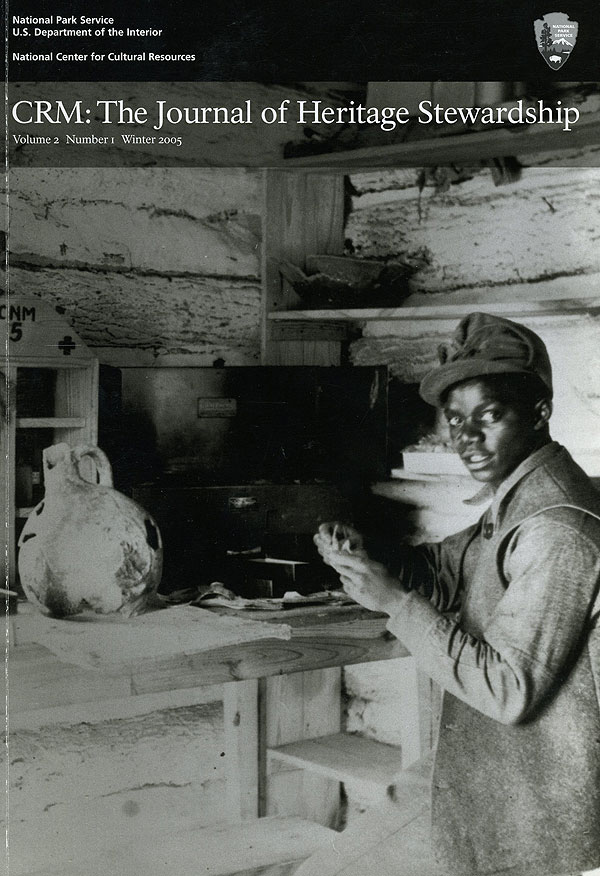
Cover image: The creation of the Civilian Conservation Corps (CCC) in the spring of 1933 and the transfer of more than 40 national battlefields, cemeteries, monuments, and other sites from the War Department to the National Park Service a few months later changed the course of heritage preservation in the United States. National Park Service officials endeavored to meet their new responsibilities by applying the CCC camp model to preservation and conservation projects.
Between 1933 and 1940, more than 300,000 black students and veterans participated in the CCC program that employed more than 3 million people nationwide. The two young men shown here processing ceramic fragments at the Jamestown Island archeology field laboratory near Williamsburg, VA, were enrollees in the segregated work camp established at Colonial National Monument (now Colonial National Historical Park), one of a number of national parks to host black CCC camps in the 1930s. (H. Yorks, photographer, 1936. Courtesy of the National Park Service Historic Photograph Collection, Harpers Ferry Center.)
Download the complete issue as a pdf (11 MB). If you do not already have a pdf reader, you can download a free version of Adobe Reader.